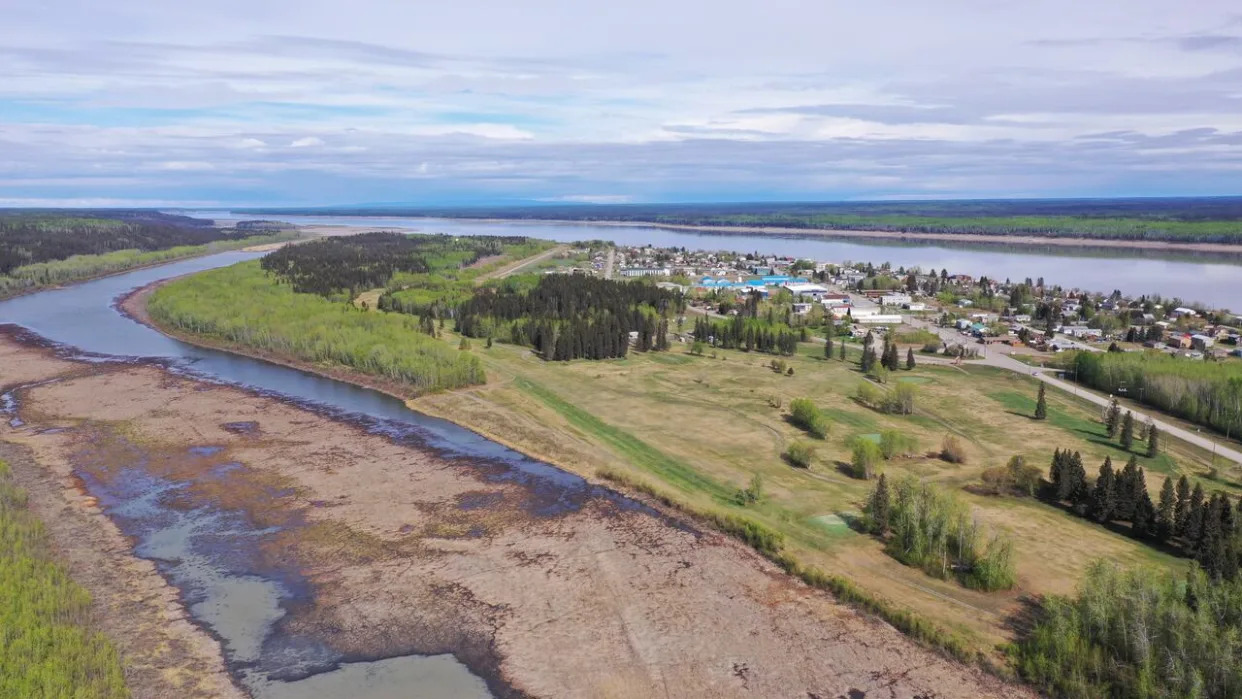
As the Liard River's water level continues to drop, Fort Simpson Mayor Sean Whelly is urging people to get prepared earlier than usual in case the MV Lafferty ferry is forced to close down early. Fort Simpson, a village at the confluence of the Mackenzie and Liard rivers, relies on the ferry in the summer and an ice crossing in the winter. Once the ferry closes for the season — usually around Nov.
3 — it takes several weeks for the ice crossing to be built so residents can leave by road. The on Wednesday that the MV Lafferty ferry is now restricted to loads under 64,000 kilograms, due to low water levels. The ferry connects the community to Highway 1.

Whelly said the water levels on the Liard River usually get lower in October. This year, however, they are already dropping. "So people thinking about getting goods into Fort Simpson should be mobilizing right now and getting their logistics in order, because I think it's just probably going to get worse," Whelly said.
Fort Simpson Mayor Sean Whelly says people should get prepared for freeze-up earlier than usual this year. Water levels on the Liard River are dropping early, which he says could jeopardize the last part of the ferry season. (Hannah Paulson/CBC News) The ice crossing typically opens around Nov.
29. Whelly suggested residents and stores should start stocking up on dry goods, and any equipment for construction projects should also be brought in soon. Łı́ı́dlı̨ı̨ Kų́ę́ First Nation Chief Kele Antoine said the recent ferry shutdowns this season are more than an inconvenience.
"[It's] also about safety, access to health care, and food security for the community," he said. Antoine said the low water levels they are facing this year are a stark reminder of the vulnerabilities in the community's transportation infrastructure. Kele Antoine, the chief of Łı́ı́dlı̨ı̨ Kų́ę́ First Nation, said the ferry closures this summer are more than an inconvenience — they put the community's safety at risk.
(Liny Lamberink/CBC) He said immediate planning needs to be done to build a bridge over the Liard River — a request the village has also made several times recently. "This crucial piece of infrastructure will provide year-round access and stability for our people, not only here but for all communities up and down the proposed Mackenzie Valley Highway extension," Antoine said. The N.
W.T. government's plan to dredge the sides of the Liard River by Fort Simpson has been pushed back to Oct.
31. The project aims to clear the way for the MV Lafferty ferry to run safely in low water. It was originally supposed to start in mid-August and wrap up this past Wednesday.
Whelly said the government notified him of the delay. He said they told him it would be better to do the project later, when water levels are lower, because an excavator working from shore would be able to reach out further into the water. Whelly said the project is expected to cover about 50 feet on each side of the river.
According to documents on the Mackenzie Valley Land and Water Board, the territory's Infrastructure department aims to remove 8,000 cubic metres of material in total from the ferry's navigational path. Whelly said it's a good project, but it won't have the same impact . "It's good.
Anything like that would make an improvement," he said. "But if people are thinking, like, typical dredging operations where, you know, he's got a big barge out in the middle of the river — that's not what's happening here. It's just to create a little bit more level bottom where the boat actually docks.
" CBC reached out to the Infrastructure department, but couldn't get a response by deadline..












